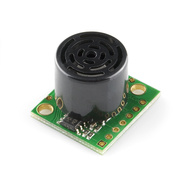Shiny New Toys
Programmable Coin Acceptor

This coin acceptor/validator module works with any coin. It determines if a coin is valid by looking at its diameter, thickness and dropping speed. One might conceive of an arcade-style gallery – an “artcade” – in which a viewer purchases a single viewing of an artwork with one or several quarters. Unlike the appstore, the artcade brings art enthusiasts together in a communal space. Unlike traditional art galleries, the artcade enables “everyone else” to engage with and support contemporary art in a tangible way. We might also envision an art tollbooth, where a passerby is charged a small fee to enter an installation.
Conductive Knit Jersey

Conductive fabric raises the possibility of textile interfaces. According to the description on adafruit, the knit is actually a single strand of fiber. So if there is a tear in the thread – does the whole square unravel? Ignoring this for a moment, the fabric has many interesting uses in media art. Using a LilyPad Arduino to receive inputs and execute instructions, it becomes possible to invent interactive, “intelligent” clothing. For instance, a tap on the breast pocket of a shirt could trigger a program which conveys the current number of unread emails in one’s inbox. Tap, and wait for the ensuing jolts: “Ow! Ow! Ow! Three unread emails.”
Ultrasonic Range Finder

Maxbotix LV-EZ1 is an ultrasonic range finder. It emits a 42 kHz wave and records the time it takes for the wave to return to the module. Based on the speed of sound in air at sea level, the module calculates its distance from some object. I have one question: would an array of these work as a depth camera? This might be feasible if each device emitted a unique frequency, so that the modules working in parallel wouldn’t confuse each other. But I wonder – how might such a depth camera compare to a depth camera that uses IR?